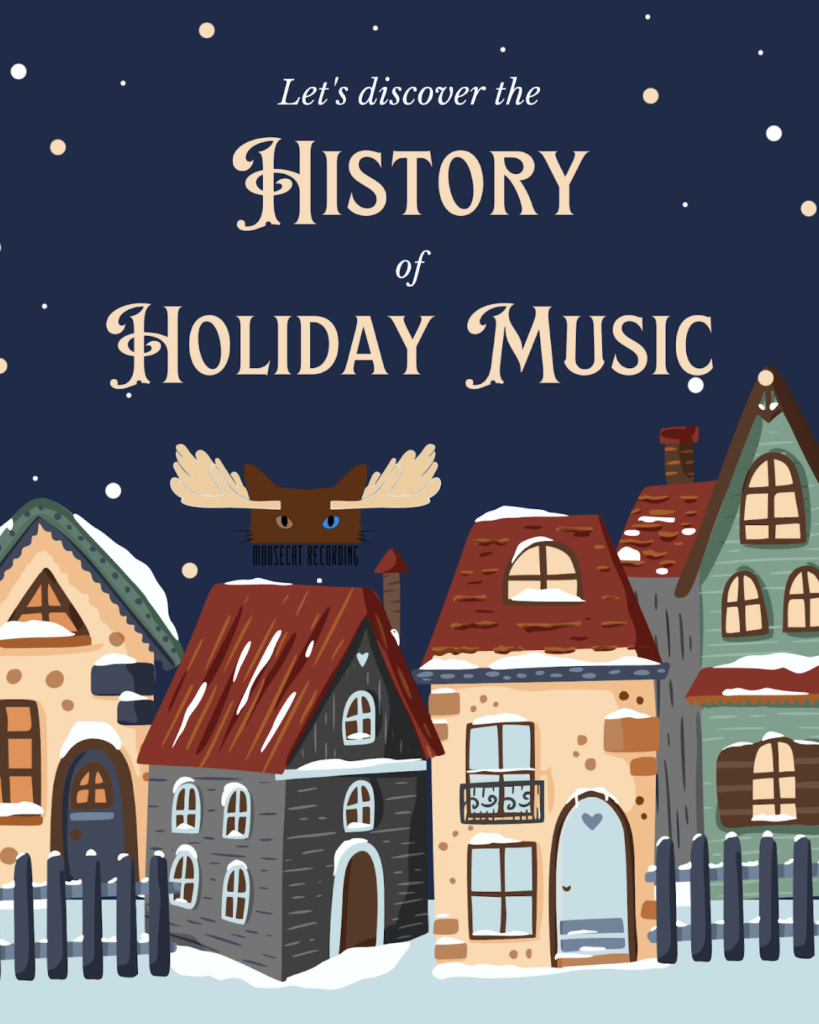History Of Holiday Music – Not Just Christmas
Holiday music has been a cherished tradition for centuries, with songs and carols dating back to ancient civilizations. The history of holiday music is a rich and diverse one, spanning cultures and religious traditions.
One of the earliest forms of holiday music can be traced back to ancient Rome, where the festival of Saturnalia was celebrated with music and song. The medieval period saw the emergence of carols, which were originally danced songs that were often associated with religious celebrations such as Christmas and Easter. These carols were often performed in churches, and were often accompanied by instruments such as lutes and recorders.
The 18th and 19th centuries saw the rise of the parlor song, a popular form of music that was often performed in the home. Many of these songs were holiday-themed, and were often accompanied by piano or guitar. This period also saw the emergence of the Christmas hymn, which is still a popular form of holiday music today.
In the 20th century, holiday music continued to evolve, with the advent of new technology and the rise of popular music. The 1940s and 1950s saw the emergence of the holiday crooner, with artists such as Bing Crosby and Frank Sinatra releasing popular holiday albums. The 1960s and 1970s saw the rise of rock and pop holiday music, with artists such as John Lennon and Paul McCartney releasing holiday-themed songs.
Today, holiday music continues to be a beloved tradition, with a wide range of styles and genres represented. From classic carols to contemporary pop songs, there’s a holiday music for everyone. The holiday music industry is a big part of the entertainment industry and it’s a way of celebrating the season, bringing people together and spreading joy and cheer.
Overall, the history of holiday music is a rich and diverse one, spanning cultures and religious traditions, and evolving with the times. It’s a tradition that has stood the test of time and continues to be an important part of holiday celebrations around the world.
Kwanzaa
Kwanzaa is a week-long celebration honoring African heritage, which takes place from December 26th to January 1st. The holiday was created in 1966 by Dr. Maulana Karenga, an African American professor and activist. One of the core principles of Kwanzaa is Kuumba, which means “creativity,” and music is an important part of the celebration.
The origins of Kwanzaa music can be traced back to Africa, where music has always been an integral part of daily life and ceremonies. Traditional African music is characterized by complex rhythms and polyphonic textures, and it is often performed using drums, percussion instruments, and vocal harmonies.
In the 1960s and 1970s, a new genre of music emerged in the African American community, inspired by the Civil Rights Movement and the Black Power movement. This music, known as Black Nationalist music, sought to promote a positive image of black people and to express their pride in their heritage. Many of the songs were politically charged, and they often incorporated elements of traditional African music.
One of the most influential artists of this era was Nina Simone, who blended jazz, blues, and gospel music with African rhythms. Her song “To Be Young, Gifted and Black” became an anthem for the Civil Rights Movement.
As Kwanzaa gained popularity, more and more musicians began to create music specifically for the holiday. Some of the most well-known Kwanzaa songs include “Kwanzaa Song” by Stevie Wonder and “Seven Principles” by The Five Heartbeats.
Today, Kwanzaa music continues to evolve, with new artists drawing inspiration from a variety of genres, including hip-hop, R&B, and reggae. The holiday remains an important opportunity for people of African descent to celebrate their heritage and to express their creativity through music.
Hanukkah
Hanukkah, also known as the Festival of Lights, is an eight-day Jewish holiday that commemorates the miracle of the oil that burned for eight days in the Temple in Jerusalem. The holiday is celebrated in December and is marked by the lighting of the menorah, the traditional Hanukkah candelabrum. Music is an important part of the Hanukkah celebration, as it adds joy and celebration to the holiday season.
The origins of Hanukkah music can be traced back to the Middle Ages. During this time, Jewish communities in Europe and the Middle East would sing hymns and prayers in Hebrew, Aramaic and Yiddish. These songs were called “piyyutim” and they were sung in synagogues during the Hanukkah. Many of these songs were written by poets, and they often incorporated biblical texts, as well as references to the Hanukkah miracle.
In the 19th century, a new genre of Hanukkah music emerged in Eastern Europe. This music was known as “Hasidic music” and it was characterized by its joyful, upbeat melodies. Hasidic music was often performed by Jewish communities in their homes during Hanukkah, and it was accompanied by dancing and singing.
In the 20th century, Hanukkah music started to change as Jewish immigrants arrived in America and brought their musical traditions with them. Many Jewish songwriters started to create Hanukkah songs in English and Yiddish, in order to appeal to the wider Jewish community. One of the most popular Hanukkah songs of this era was “Maoz Tsur,” which was written in the 1940s by a Jewish songwriter named Samuel Cohen.
Today, Hanukkah music continues to evolve and is influenced by a wide range of musical styles including pop, rock, hip-hop, and klezmer. Many Jewish artists have released Hanukkah albums and songs, and the holiday is often celebrated with concerts and music festivals.
Conclusion
Music plays an important role in the Hanukkah celebration, it adds joy and celebration to the holiday season and it has evolved over time, and continues to change, adapting to the diverse Jewish communities around the world.

